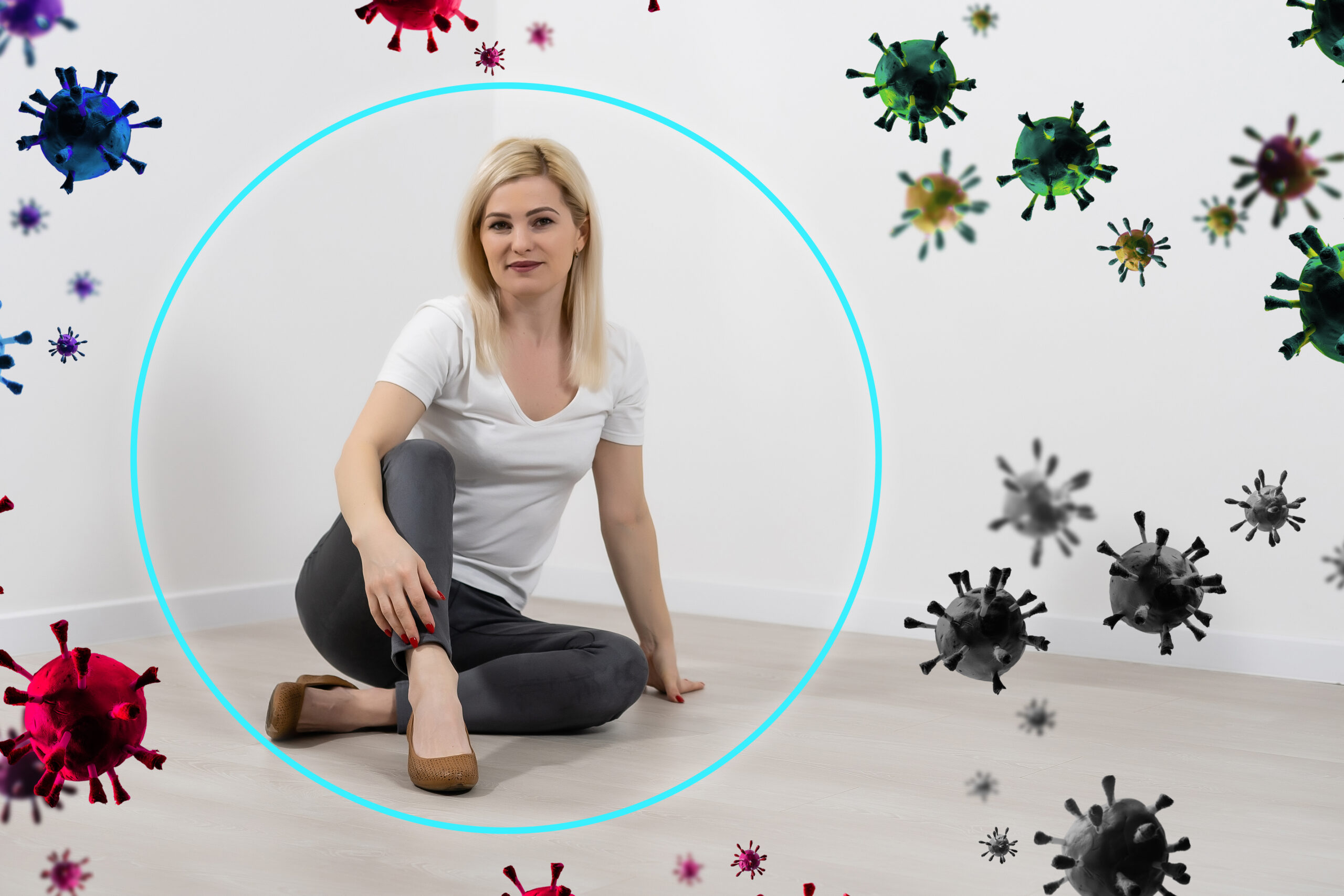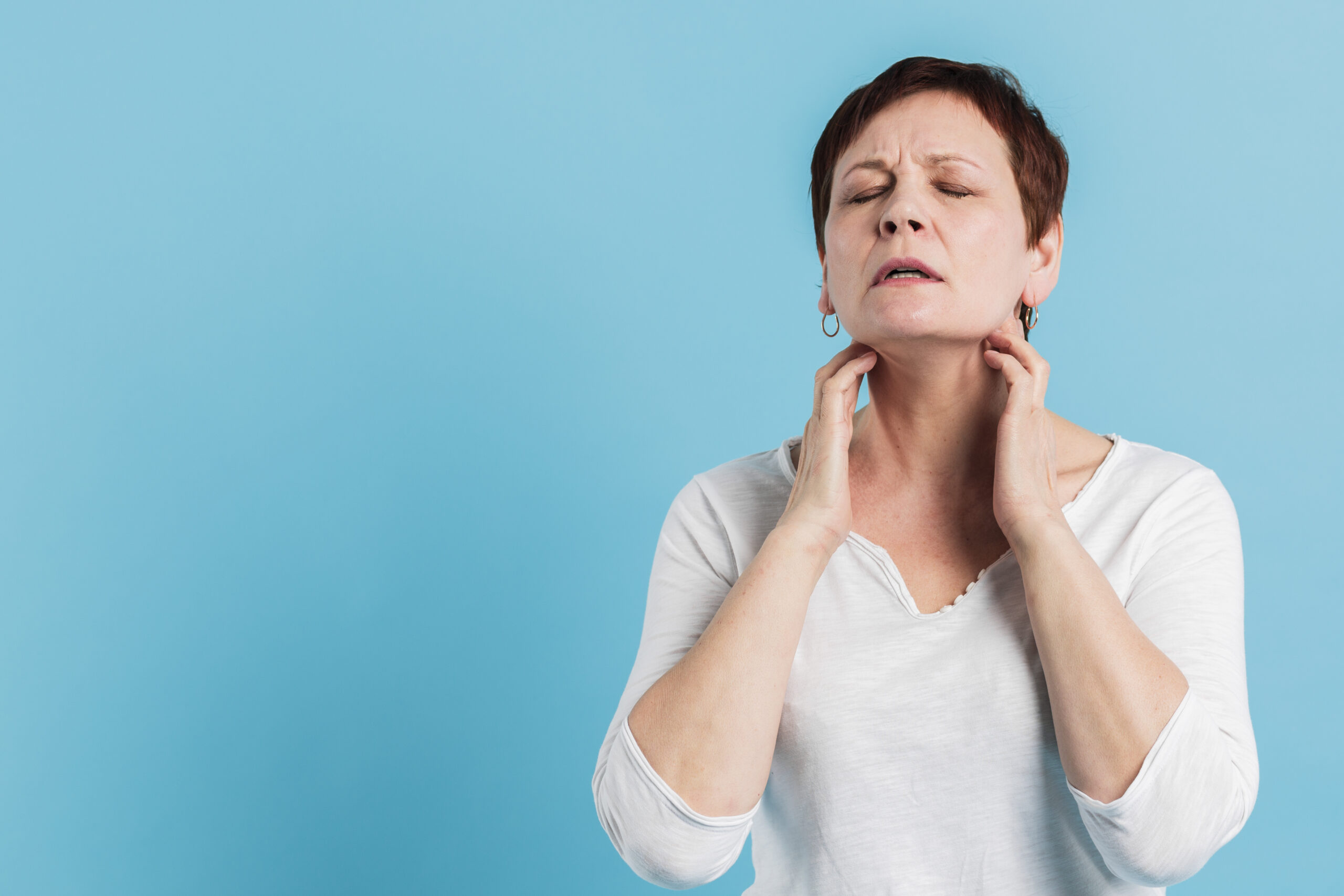Around two liters of fluid from the cardiovascular system seep daily into the body tissues. Thankfully, the lymphatic system collects the body's excess fluid, called lymph. A lymph is a clear liquid that comes from plasma in the blood.
The lymphatic vessels create a complex network of branches covering most of the body tissues. They function similarly to blood vessels and work with veins to transport fluid from the tissues.
Lymph fluid does not flow through our bodies like blood; instead, it is pushed through the vessels by our muscles. Lymphatic vessels contain walls and valves that regulate the flow of lymph. These valves function similarly to those in veins, preventing fluid from flowing in the wrong direction. The lymphatic fluid is slowly carried towards the larger vessels and eventually flows into our trunk's two main lymphatic channels. Once filtered, this fluid returns to the bloodstream through the veins.
The vessels branch out through connections called lymph nodes![]() . Immune cells evaluate the existence of foreign substances like bacteria, viruses, or fungi present there.
. Immune cells evaluate the existence of foreign substances like bacteria, viruses, or fungi present there.
In addition to lymph nodes, the body also has other lymphatic tissues.
The tonsils![]() are ed at the back of the mouth. The tonsils are strategically positioned, hanging from the ring to connect the mouth and throat. Thanks to this, they protect against inhaling and swallowing foreign bodies.
are ed at the back of the mouth. The tonsils are strategically positioned, hanging from the ring to connect the mouth and throat. Thanks to this, they protect against inhaling and swallowing foreign bodies.
Although the spleen![]() is not directly connected to the lymphatic system, it is still considered lymphoid tissue. It contributes to white blood cell production. That process is significant for the immune system.
is not directly connected to the lymphatic system, it is still considered lymphoid tissue. It contributes to white blood cell production. That process is significant for the immune system.
The spleen is important in filtering the blood by removing microbes and old or damaged red blood cells and platelets.
The thymus![]() is a lymphatic organ and endocrine gland located just behind the sternum. It secretes hormones and plays a significant role in T lymphocyte production, maturation, and differentiation. The thymus actively develops the immune system from birth and throughout childhood.
is a lymphatic organ and endocrine gland located just behind the sternum. It secretes hormones and plays a significant role in T lymphocyte production, maturation, and differentiation. The thymus actively develops the immune system from birth and throughout childhood.
Made up of lymph follicles, these small masses of tissue![]() line the walls of the ileum in the small intestine. Lymphoid cells identify and destroy germs and other pathogens and play a significant role in defending against future infections. More than 50 percent of the cells producing antibodies come from the intestinal wall.
line the walls of the ileum in the small intestine. Lymphoid cells identify and destroy germs and other pathogens and play a significant role in defending against future infections. More than 50 percent of the cells producing antibodies come from the intestinal wall.
The appendix![]() contains lymphoid tissue that kills germs. Although often viewed as a superfluous organ in adults, the appendix plays a significant role in children by helping the immune system fight disease.
contains lymphoid tissue that kills germs. Although often viewed as a superfluous organ in adults, the appendix plays a significant role in children by helping the immune system fight disease.
The lymphatic system performs three primary functions: regulating fluid balance, facilitating fat absorption, and supporting immunity within the body.
The function of the lymphatic system is to regulate and maintain proper fluid balance![]() in the body. This process helps remove extra fluids and proteins from tissues that blood vessels cannot transport. These fluids are located in the interstitial spaces, which are tiny gaps around cells in tissue spaces and cavities. The smallest blood and lymphatic vessels can access these areas.
in the body. This process helps remove extra fluids and proteins from tissues that blood vessels cannot transport. These fluids are located in the interstitial spaces, which are tiny gaps around cells in tissue spaces and cavities. The smallest blood and lymphatic vessels can access these areas.
When blood flows through the capillaries in our body's tissues, about 90% of the plasma is returned to the veins, while the remaining 10% goes through the lymphatic system. This amounts to 2-3 liters of fluid that is returned each day, and it contains proteins that are too large to be transported through blood vessels.
If the lymphatic system were to be lost, it would result in a fatality within a day. Our lymphatic system drains excess fluid, prevents tissue swelling, and maintains proper blood volume and pressure.
Most fats absorbed![]() from the digestive tract are absorbed in the part of the intestinal membrane in the small intestine that is specially adapted by the lymphatic system.
from the digestive tract are absorbed in the part of the intestinal membrane in the small intestine that is specially adapted by the lymphatic system.
The lymphatic system has small vessels within the intestine's villi, formed by tiny folds on the intestine's absorbent surface. These finger-like structures absorb fats and fat-soluble vitamins, producing a white fluid that contains lymph and emulsified fats (free fatty acids). When this fluid reaches the venous circulation, it indirectly supplies nutrients, while capillaries directly take up other nutrients.
One of our body's essential functions is protecting itself against harmful organisms. This function is crucial to survival as it helps prevent infections caused by constant exposure to potentially dangerous microorganisms.
The initial defense mechanism of the body comprises:
However, pathogens often manage to enter the body despite these defense mechanisms. The lymphatic system is crucial in enabling our immune system to respond appropriately. When the immune system fails to fight off harmful microorganisms or pathogens, it can lead to severe consequences, including fatality.

The production of white blood cells, known as lymphocytes![]() , occurs in the lymphatic system. These cells then circulate throughout the lymphatic system.
, occurs in the lymphatic system. These cells then circulate throughout the lymphatic system.
After entering the lymph nodes, foreign particles like viruses and bacteria are filtered and stimulated to become antigens. These antigens are responsible for causing an immune response in the body.
When lymphocytes are activated, they form antibodies and start defending the body. If someone has encountered a specific pathogen before, their body can create antibodies from memory to fight it off again in the future.
Lymph nodes are in the neck, groin, and armpits. When we experience an enlarged lymph node due to an illness, we may feel it on one or both sides of the neck. Lymphocytes, responsible for fighting infections, gather in the lymph nodes, communicating with each other and initiating a defensive response.
Once activated, lymphocytes move through the lymphatic system until they enter the bloodstream. They can spread the immune response throughout the body via blood circulation.
Immunologists refer to the “specific immune response” when discussing the lymphatic system and the function of lymphocytes. It means they target specific pathogens and can persist for an extended period.
The lymphatic system may stop functioning correctly if lymph nodes, vessels, or tissues become blocked, infected, inflamed, or cancerous.
Lymphoma![]() refers to cancer that originates in the lymphatic tissue.
refers to cancer that originates in the lymphatic tissue.
Hodgkin's lymphoma![]() shows a distinct cell called Reed-Sternberg that can be observed through a microscope. It is typically associated with a previous Epstein-Barr virus infection and does not cause pain in the lymph nodes. ABVD chemotherapy and radiation therapy are commonly used treatments.
shows a distinct cell called Reed-Sternberg that can be observed through a microscope. It is typically associated with a previous Epstein-Barr virus infection and does not cause pain in the lymph nodes. ABVD chemotherapy and radiation therapy are commonly used treatments.
Non-Hodgkin's lymphoma![]() affects lymphocytes. It is more common than Hodgkin's lymphoma. It is treated based on whether it is high-grade or low-grade and has a poorer prognosis than Hodgkin's lymphoma.
affects lymphocytes. It is more common than Hodgkin's lymphoma. It is treated based on whether it is high-grade or low-grade and has a poorer prognosis than Hodgkin's lymphoma.
Metastasis![]() is the medical term used to describe the spread of cancer in the body. Although lymphoid tissue may be the primary site of cancer (e.g., lymphoma), it is more often the route of metastasis. The other way cancer spreads is through the blood.
is the medical term used to describe the spread of cancer in the body. Although lymphoid tissue may be the primary site of cancer (e.g., lymphoma), it is more often the route of metastasis. The other way cancer spreads is through the blood.
Cancer cells are captured by lymphatic vessels when they enter the altered tissue's basement membrane and travel to the connective tissue underneath. From there, the cancer cells enter the lymphatic capillaries and the lymph stream, which carries them to the nearest lymph node. The initial lymph node collecting fluid from the tumor is the sentinel lymph node (SLN).
Examining the sentinel node for cancer cells is crucial for determining the prognosis and stage of the tumor. If cancer cells are only present in the closest lymph node, the sentinel node, it suggests that the tumor is in its early stages. Conversely, if the cancer has spread to lymph nodes further away from the original tumor, it may indicate that the tumor is in a later stage.
Lymphadenopathy![]() is when one or more lymph nodes become enlarged. If there is only one or a small group of enlarged nodes, it is usually because the body is fighting off an infection or inflammation. When multiple lymph nodes are involved in different body areas, it is called generalized lymphadenopathy.
is when one or more lymph nodes become enlarged. If there is only one or a small group of enlarged nodes, it is usually because the body is fighting off an infection or inflammation. When multiple lymph nodes are involved in different body areas, it is called generalized lymphadenopathy.
Lymphadenopathy can be caused by:
Lymphedema![]() is swelling caused by the accumulation of lymph that can occur when the lymphatic system is damaged or malformed. It usually affects the extremities, although the face, neck, and abdomen can also be affected. In an extreme condition called elephantiasis, the swelling progresses to the point where the skin becomes thick and looks similar to the skin of an elephant's limbs.
is swelling caused by the accumulation of lymph that can occur when the lymphatic system is damaged or malformed. It usually affects the extremities, although the face, neck, and abdomen can also be affected. In an extreme condition called elephantiasis, the swelling progresses to the point where the skin becomes thick and looks similar to the skin of an elephant's limbs.
Lymphedema may develop following an infection or surgery that involves removing lymph nodes in the armpit or groin area. Conventional treatment consists of lymphatic drainage and the use of compression garments.
There are two common reasons why lymph nodes can become swollen![]() :
:
You should seek medical advice if:
If you have swollen lymph nodes, it could be a sign of various medical conditions. Glandular fever is a viral infection. It can cause long-term swelling, sore throat, and fatigue. Tonsillitis is more prevalent in children than adults and occurs when the lymph nodes at the back of the mouth fight off an infection, usually viral but sometimes bacterial. Acute pharyngitis is a bacterial infection caused by group A strep bacteria and can also cause lymph nodes to swell.

Many simple changes can help improve the lymphatic system, from diet and exercise to deep breathing.
Our heart serves as a pump to move blood throughout the body. The lymphatic system doesn't have this advantage. That is why movement![]() and muscle contractions are significant to the lymphatic fluid.
and muscle contractions are significant to the lymphatic fluid.
Many of the body's lymph vessels run along the legs and arms, so any movement will provide stimulation. It can be as simple as walking during your lunch break or running at night. Simple household chores, such as gardening and vacuuming, can also be stimulating.
Maintaining a diet![]() full of sugary and processed foods can slow down your lymphatic system and even cause drainage problems. An earlier study in mice fed a high-fat diet showed impaired lymphatic system function – specifically the lymphatic vessels.
full of sugary and processed foods can slow down your lymphatic system and even cause drainage problems. An earlier study in mice fed a high-fat diet showed impaired lymphatic system function – specifically the lymphatic vessels.
So, what should you eat to strengthen your lymphatic system? Let's try to eat fruits, vegetables, and lean proteins. Also, you can use herbs and spices. Fruits such as blueberries and oranges have antioxidant properties that benefit the immune system's health. Eat foods that contain omega-3 fatty acids that benefit the lymphatic system.
Slow, controlled breathing![]() can help increase the movement of lymph throughout our body. When we take a deep breath, the diaphragm expands, allowing the lungs to engage the thoracic duct to stimulate lymph fluid back into the bloodstream.
can help increase the movement of lymph throughout our body. When we take a deep breath, the diaphragm expands, allowing the lungs to engage the thoracic duct to stimulate lymph fluid back into the bloodstream.
For patients with lymphedema, a condition that causes swelling, deep breathing can help the lymph flow back into the bloodstream to reduce swelling. If you want to practice deep breathing, take slow breaths through your nose. Then, exhale slowly while trying to make it twice as long as you inhale. This technique can help increase the oxygen saturation of your blood.
Everyone enjoys a good massage![]() to relieve aches and pains, but massages have a functional purpose to help restart the lymphatic system.
to relieve aches and pains, but massages have a functional purpose to help restart the lymphatic system.
Known in medicine as lymphatic drainage, it is a type of massage that helps remove any lymphatic system blockages that cause swelling. In some medical conditions, such as lymphedema caused by breast cancer, swelling occurs when lymph fluid builds up in the arms and legs. The masseur uses certain techniques that help restore fluid movement.
Lymph fluid is mostly water, so it's important to stay hydrated. Dehydration![]() can slow down the lymphatic system and affect fluid circulation and how waste is removed from the body.
can slow down the lymphatic system and affect fluid circulation and how waste is removed from the body.
If you start to feel lethargic or notice swelling – talk to your doctor to discuss treatment options.
